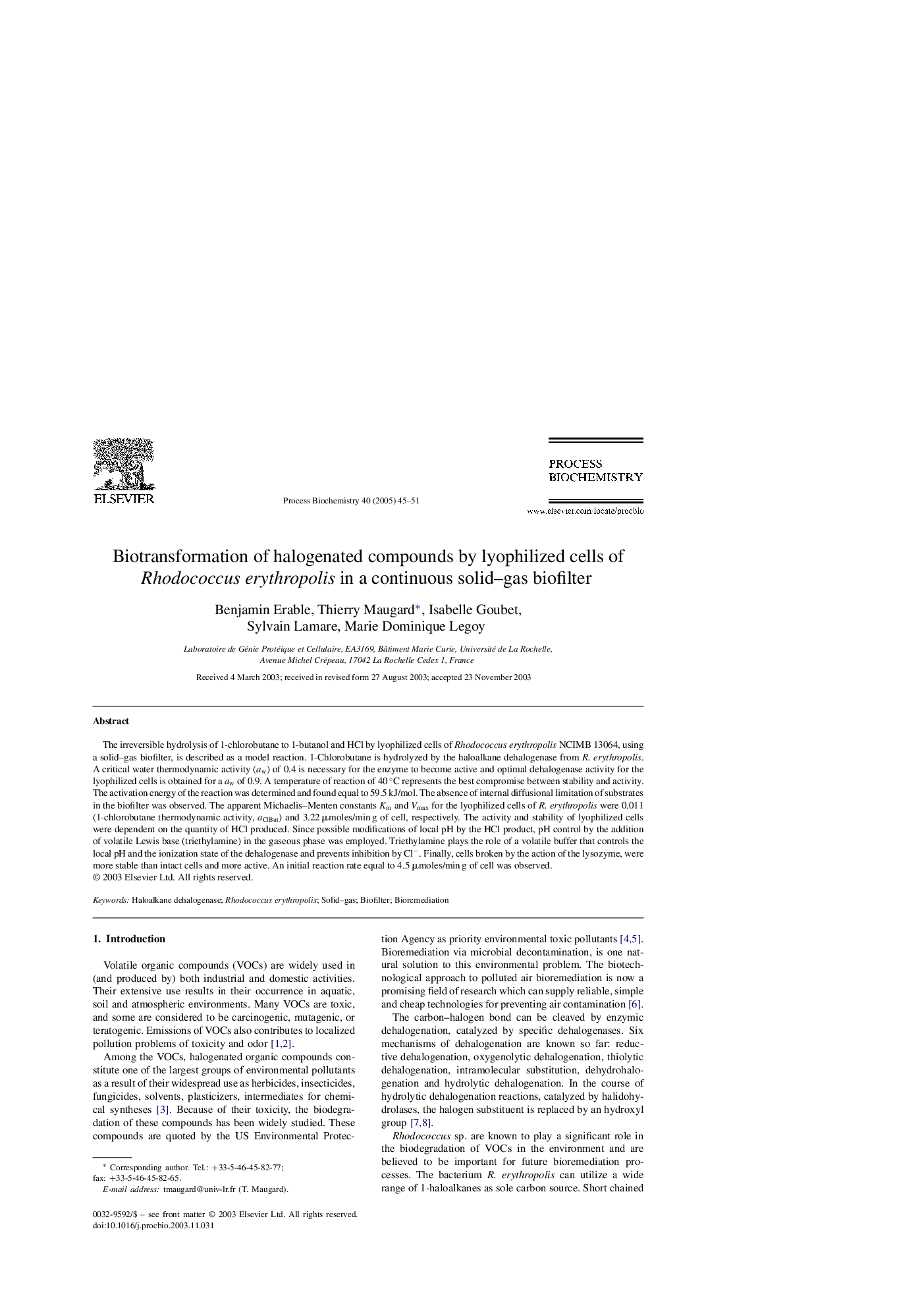| Article ID | Journal | Published Year | Pages | File Type |
|---|---|---|---|---|
| 10236156 | Process Biochemistry | 2005 | 7 Pages |
Abstract
The irreversible hydrolysis of 1-chlorobutane to 1-butanol and HCl by lyophilized cells of Rhodococcus erythropolis NCIMB 13064, using a solid-gas biofilter, is described as a model reaction. 1-Chlorobutane is hydrolyzed by the haloalkane dehalogenase from R. erythropolis. A critical water thermodynamic activity (aw) of 0.4 is necessary for the enzyme to become active and optimal dehalogenase activity for the lyophilized cells is obtained for a aw of 0.9. A temperature of reaction of 40 °C represents the best compromise between stability and activity. The activation energy of the reaction was determined and found equal to 59.5 kJ/mol. The absence of internal diffusional limitation of substrates in the biofilter was observed. The apparent Michaelis-Menten constants Km and Vmax for the lyophilized cells of R. erythropolis were 0.011 (1-chlorobutane thermodynamic activity, aClBut) and 3.22 μmoles/min g of cell, respectively. The activity and stability of lyophilized cells were dependent on the quantity of HCl produced. Since possible modifications of local pH by the HCl product, pH control by the addition of volatile Lewis base (triethylamine) in the gaseous phase was employed. Triethylamine plays the role of a volatile buffer that controls the local pH and the ionization state of the dehalogenase and prevents inhibition by Clâ. Finally, cells broken by the action of the lysozyme, were more stable than intact cells and more active. An initial reaction rate equal to 4.5 μmoles/min g of cell was observed.
Related Topics
Physical Sciences and Engineering
Chemical Engineering
Bioengineering
Authors
Benjamin Erable, Thierry Maugard, Isabelle Goubet, Sylvain Lamare, Marie Dominique Legoy,
